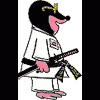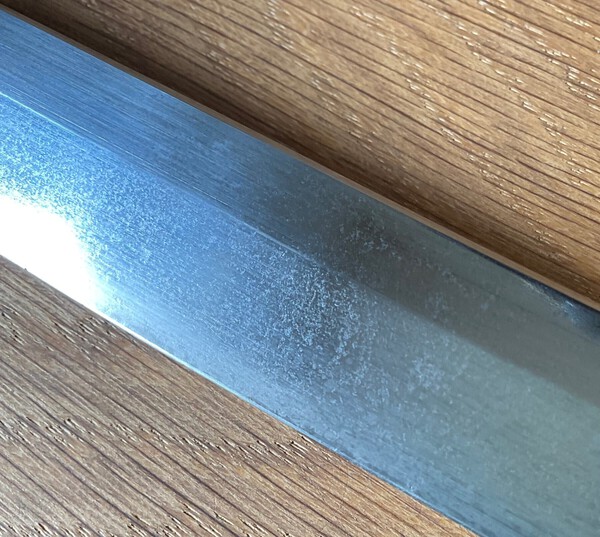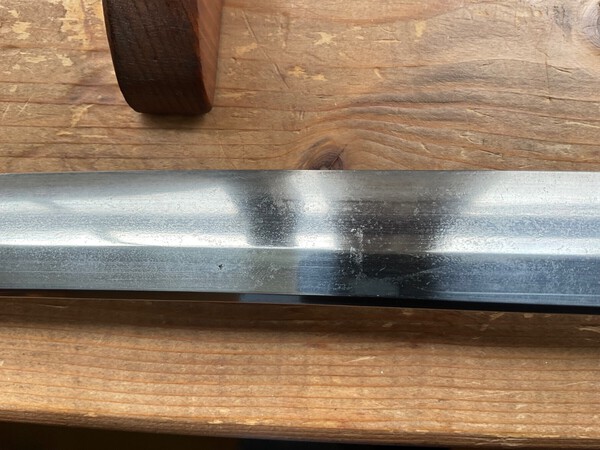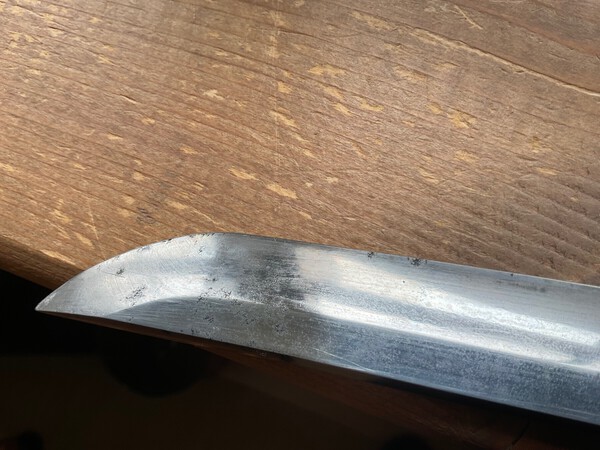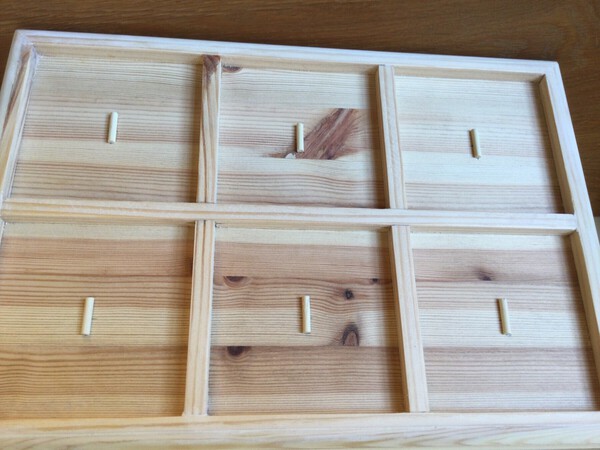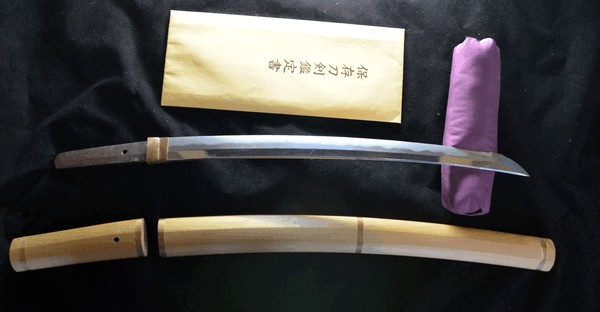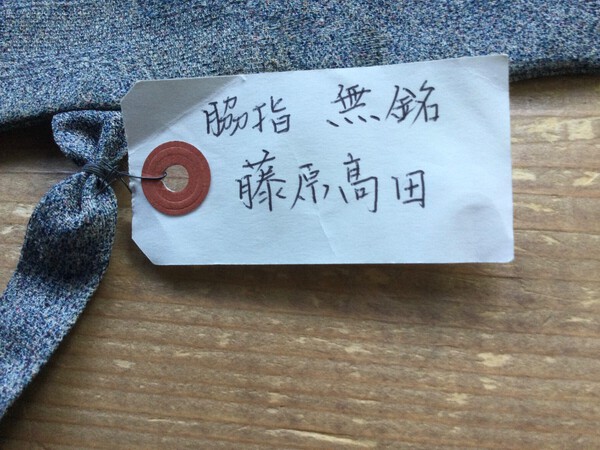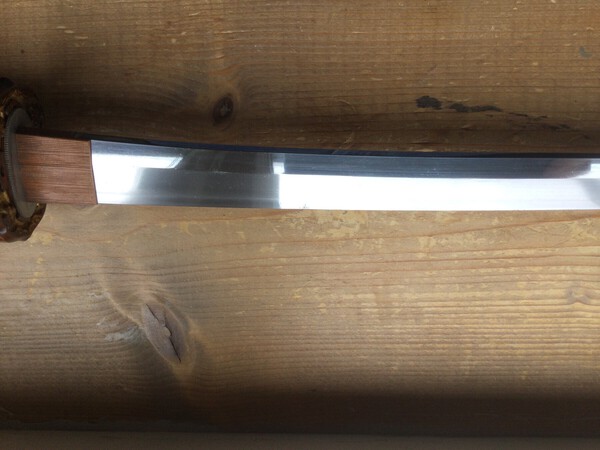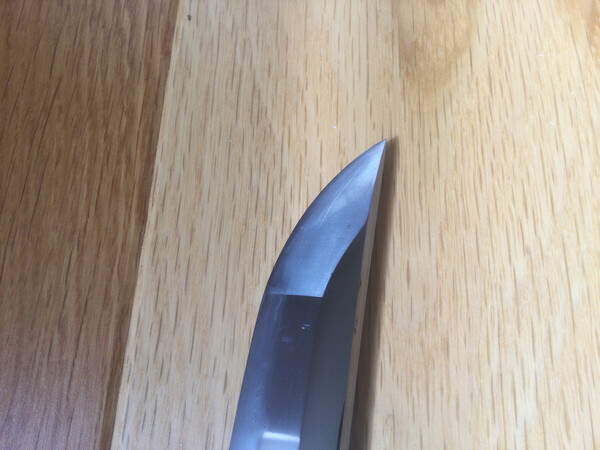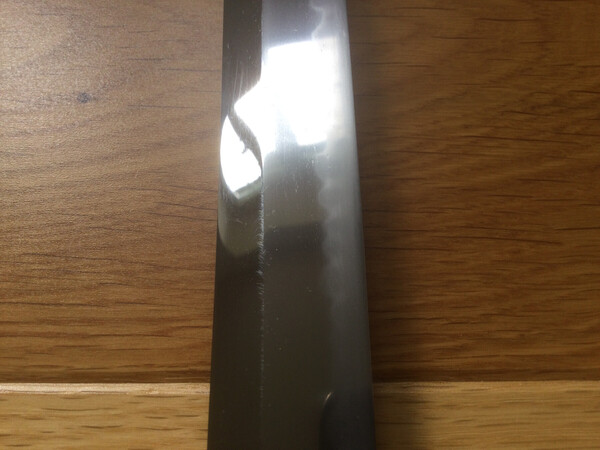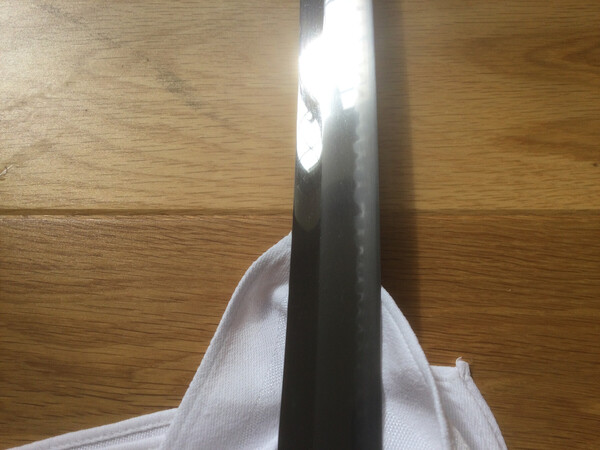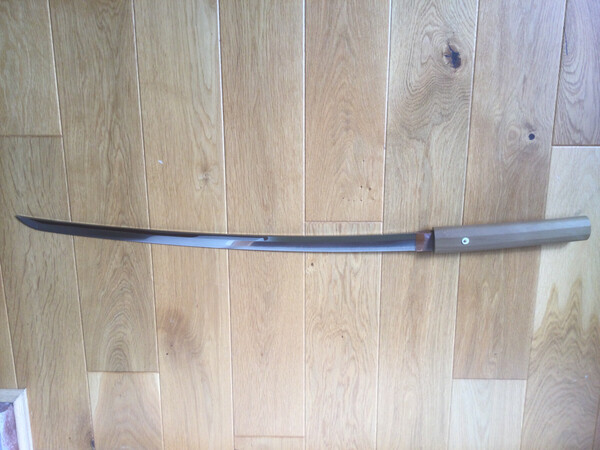-
Posts
355 -
Joined
-
Last visited
-
Days Won
1
Content Type
Profiles
Forums
Events
Store
Downloads
Gallery
Everything posted by Moley
-
Thanks Gentlemen, and thanks to Raaay... No it doesn't "bite" therefore no tempered edge.
-
Dear Gentlemen, I posted this as an "ADD ON" to an old old thread. Still puzzled as to what exactly I have, so I am starting a new thread in the hope somebody can enlighten me. I am most interested in finding out if it is stainless steel, has it got a hamon at all and HOW TO TELL ? Old post "I too have a YosheTsugu (Yoshi Tsugu) which by all appearances is identical to the one shown here. It has even the same kind of Habaki and also has the Nagoya stamp. Mine however is Sho Wa (Period) Ju Hachi ( 18th ) Nen (year = 1943) Ju Ichi ( 11 th November) Gatsu (Month). The reason why I am posting here is to ask about the sword and the smith. When I had the Tsuka re-wrapped (It came without ito) The craftsman said that the Same was plastic and not real. However it is such a good imitation you would think it's good quality Same. Also I can't seem to see a hamon in the blade and don't want to spend a lot of money on a re-polish if it's stainless steel. Can anyone shed more light about the type of Gunto that Yoshe Tsugu Produced and what steel did he use? Is the sword pictured on this thread with a hamon? . Any info about smith and or sword greatly appreciated. Thanks Gwyn
-
Thanks everyone. Will keep in the shadows.
-
Living in a house built North / South, even in wet Wales we get a LOT of Sun shining in. Over the years, Prints on the walls and Book spines have faded due to sunlight. Even the Tsuka ito on one Katana left in the sun's path faded. My question is this. Thinking of moving a Tsuba display to another part of the room. BUT the sun hits it in the afternoon. My question.. Do iron Tsuba Fade in Sunlight ? Gwyn
-
Searched for months for a tsuba stand and couldn’t find any. The Hanwei ones are discontinued 😢. So I got an idea, I showed oneof my students who is very good with his hands what I was after. This is the result. (and he didn’t charge me a penny).
-
-
Hi guys, I can vouch for Colin. I bought the Rabbits Tsuba from him. Good communication, fast despatch, well packed with box and description. Great buy, lovely to hold.. Gwyn
-
Hi guys, I can vouch for Colin. I bought the Rabbits Tsuba from him. Good communication, fast despatch, well packed with box and description. Great buy, lovely to hold.. Gwyn
-
Hi guys, I can vouch for Colin. I bought the Rabbits Tsuba from him. Good communication, fast despatch, well packed with box and description. Great buy, lovely to hold.. Gwyn
-
Thank you so much Jean and Uwe. You have put a Face to the name for me. It must have been the bag that came when I bought this ..
-
Hi everybody, whilst cleaning out a cupboard in my study, I came across quite a few “long forgotten” sword bags. One of them has this label attached to it with a very very thin piece of wire ! I cannot for the life of me remember when I got the bag or what sword came with it. The bag is wakizashi size. I was wondering if anyone here could kindly translate the label for me to see what is says? thanks Gwyn
-
Ahh well..
-
Hi Jon, My humble opinion. £250 = pennies You can't go wrong IMHO. The Kozuka maybe worth that. Looks nice as an overall piece. Saya repair and Tsuka Ito easily done at home. Cannot comment on Blade condition, but looks GENUINE.
-
Wow! Thanks Bruce.😍
-
Thanks for this @Bruce Pennington. I feel a lot better now. So when I study my Mantetsu and my eye zeroes in on the blemish. I NOW think.. " Mmm m Another £2K when I only paid £1K for it..?" I go.. "What a wonderful piece I have and so lucky for having it". Out of curiosity, Tell us YOUR story .. PLEASE ?
-
Advice needed, My almost near perfect Mantetsu has a small blemish in the hamon. This is how I got it. I know many would say leave it alone. But, even though small, my eye can’t help but focus on it every time I study it. I live in the UK so not easy to fix. How to feel better about it?
-
Hi Guys, I have an E Mura blade that I love to bits. Gives me lots of pleasure. Wondering, does anyone else have an E Mura ? If so , mine is in Shira Saya. Would LOVE to see other examples. Regards Gwyn During World War II a swordsmith named Chounsai Emura (real name: Emura Shigetato), originally from Tokushima in Shikoku, operated a swordmaking school on the grounds of the Okayama Prison. He made sword blades himself and also trained prisoners to make sword blades in support of the Japanese war effort. Emura san died in 1960. He made numerous very good blades which are now much sought after by collectors and students of the Japanese sword. The following is an excert from an article from TOKEN SYNZU (Showa 55, Feb. 7, No. 213) as translated by Chris Bowen: Yoshikawa Tsunetaro (father of the current NTHK head, Yoshikawa Kentaro) wrote an article in the Token Synzu called "Nihonto to Kyo ni", which means roughly, "Swords and I". In this article, Yoshikawa sensei reminisces about his days as a polisher and official for the military's sword polishing office during the war years. In the middle of the article, he mentions an Emura san, the head of a prison in Okayama. Yoshikawa states that in his official capacity, he often travelled around the country to inspect and "looked in on" various tanrenjo around the country. He mentions that his visit to this prison forge was perhaps the most touching of his trips. He states that Emura san signed blades "Emura" and sometimes "Emura Chounsai". He says that he made blades in the Bizen style with choji hamon. (3) The article reads: "Among my visits, the most memorable was a visit to a prison in Okayama. The head of the prison, Mr. Emura, while not a professional smith, made swords as a hobby. The swords made (by Emura) were polished within the prison by the prisoners. Blades were signed using his family name, "Emura", and also "Emura Chounsai". These blades were made with a nioi based shimatta choji in the Bizen tradition. At first, before entering the facility, I wondered what type of person would be in this prison-I felt a bit of anxiety at the thought of these criminals. When the time came and I entered the prison, I witnessed the prisoners, large streams of sweat pouring from their brows as they worked, and I forgot my prior anxiety. I clearly remember the strenuous effort with which the prisoners toiled as they learned the craft of the sword." (3) Kiyoshi Morita noted that Emura exhibited his swords at the 1st Gunto exhibition in 1943; these were signed as being from Doshu in Kochi prefecture, not from Bishu in Okayama. This would lead one to speculate that before 1940 Emura was in Takamatsu city in Kagawa prefecture in Shikoku. Around 1940 he was located in Okayama prefecture (Bishu-mei) as the head of the Okayama prison, then around 1943 he returned to Kochi prefecture (Doshu-mei). Probably various mei were used as he was the head of Okayama prison and travelled considerably.(10) There is at least one documented case of a Japanese Army General surrendering an Emura blade at the end of the Pacific Conflict. Lt-Gen.(Japanese 17th Army) Kanda Masatane's sword, an Emura made blade, was surrendered on September 16, 1945 in New Guinea to Brigadier Garret of the Australian 2nd Corp. The sword now resides in the Australian War Museum (cat. no. AWM20314). [This information was obtained from Fuller & Gregory "Japanese Military and Civil Swords and Dirks". (4)] Emura blades have received Hozon origami from the NBTHK in Japan. Emura blades have also received Shinteisho and Kanteisho origami from the NTHK(3). This confirms that Emura blades are judged to be true gendaito.
-
Wow, never knew this until now. Thanks.
-
Ainu ????


